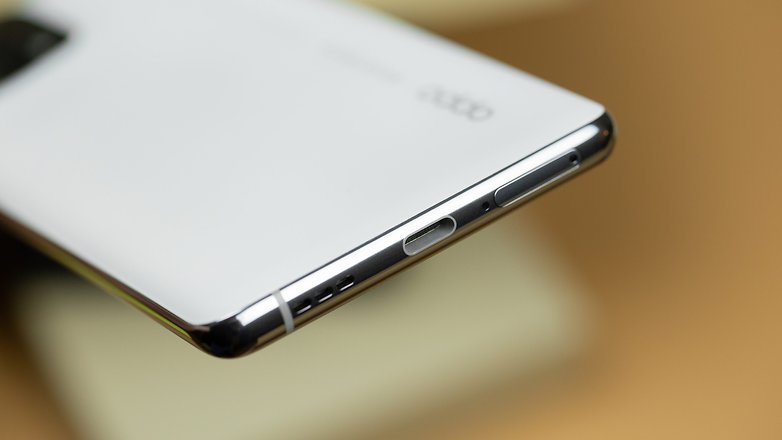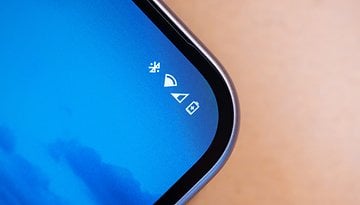Oppo Find X5 hands-on: Stellar cameras on a 2021 platform


The Oppo Find X5 was just revealed today, February 24th, alongside the Oppo Find X5 Pro and the Oppo Find X5 Lite. Here at NextPit we had the chance to try out Oppo's latest Android 12 device before the launch, and I here are my first impressions about this space-age phone.
Good
- Space-age design done right
- Future-proof cameras
- 10-bit OLED display
- Superfast charging
Bad
- It heats up considerably
- Unconvincing performance
- The screen is behind the competition in terms of brightness

The Oppo Find X5 in a nutshell
The Oppo Find X5 was unveiled on February 24, 2022, in Asian and European markets with a starting price of 999 euros (~$1.124,64). Sales of the space-age smartphone will begin in about one month, on the 21st of March. The Oppo Find X5 is an intriguing device that shares a lot with the Oppo Find X5 Pro, but Oppo has curiously left the Find X5 behind in terms of specs.
To the dismay of Space Force service members, Oppo will not launch the Find X5 in the US market, but third-party importers may still sell it, albeit for a small premium.
In short, the Oppo Find X5 comes with the latest ColorOS 12, in one memory configuration at 8 GB/256 GB. The company has ensured that the Oppo Find X5 has an adequate performance by packing a Snapdragon 888 alongside a MariSilicon X imaging neural processor. The imaging NPU is fed through a wide array of optical sensors that are equally impressive. On the back we have a set of two IMX766 sensors of 50MP.
Oppo, probably aware of the thermal needs of the Snapdragon 888, got inspired by the space shuttle and covered the Oppo Find X5 with a textured white or black glass back. IP54 protection ensures that the device is splashproof.
The screen is struggling, but it is keeping up with the competition; FHD+ AMOLED displays with 120Hz and a maximum brightness of 1,000 nits. The most impressive feat of the display is that it is capable of reproducing the 10-bit colors captured by the cameras for theoretically better color accuracy.
Design: Futuristic design meets space age materials
I will say it right off the start. The Oppo Find X5 won me in terms of the design from the moment I opened the box and turned it around. The glass back curves seamlessly following the metallic frame and the glass front and the camera island is an asymmetric rectangular contributing to an organic exterior.
What I liked:
- Unique futuristic design.
- Excellent grip and balance.
- The glass back feels nice to the touch.
What I disliked
- The included case conceals the beauty of the device.
The glass back is a pleasure to touch, with a gentle texture that still offers a great deal of resistance for a secure grip. The colors are nothing unique, white and black, but in my opinion, this reduction only adds to the space-age approach of the design that underlines all the visible elements.

This is plainly put, modern minimalism done right. The reductionist approach does not come at the expense of character and the materials work together nicely, with the overall look reminding a lot of some cute droid from a galaxy far away.
But this would not be a truly space-age device without utmost practicality! Because my hands are on the smaller size, weight and balancing are crucial for devices of screen size over 6 inches, and this one is at 6.55" (total dimensions: 160.3 mm x 72.6 mm x 8.7 mm).

The weight is okay at 196 g, but the fine balancing makes the device really easy to hold. The balance point is at the lower end of the power button, which makes it very comfortable to grasp, while the design of the camera island ensures that there is zero wobbling when you lay the device on a flat surface.
Display: Oppo fell back on the display race
When it comes to the display the Chinese company has equipped the Oppo Find X5 with the bare minimum that one must expect from a modern flagship. Misplaced minimalism? Perhaps... Now, don't get me wrong, at 120Hz refresh rate and a pixel density of 402 ppi, the FHD+ (2400 x 1080) AMOLED display is better than what we find in most devices, but as the year progresses I suspect it will be outshined by the competition.
What I liked:
- Beautiful colors.
- O1 Ultra Vision Engine offers makes everything look nicer.
- HDR10 support is adequate.
What I disliked:
- Brightness could be better.
- Even the competition from last year had better displays.
This is quite a literal statement; The maximum brightness of 1,000 nits is enough for HDR10 content reproduction, but when pitched against the Apple iPhone 13 with approximately 1,300 nits, the Find X5 falls considerably behind. Now take the 1,750 nits that the Samsung Galaxy S22 can bombard your eyes with, and it becomes apparent that the Find X5 fades in contrast.
But let us leave comparisons aside because on itself, the screen can be a joy for your eyes, especially with the wide range of features that Oppo has added on top. Oppo has implemented the o1 Ultra Vision Engine, which features an image sharpener that increases visual fidelity in low-res content and an automatic SDR to HDR converter that takes away some blandness of SDR videos.

The color depth is also on par with modern standards. At 10-bit, the screen is able to pull the weight of the camera that shoots in this level of color accuracy and as an added bonus the device can recognize when you are viewing sRGB or DCI-P3 images and adjusts accordingly.
Unfortunately, my eyes are not colorimeters, nor do I have this level of experience with photography so, at a glance, I can not tell the difference. I doubt you will be able to find value in those technicalities, but the HDR content that I tried did look very good.
Performance: The Snapdragon 888 burns hot during lift-off
We see that Oppo treated the device's internals the same way it treated its screen. In a vacuum, the Snapdragon 888 is a fairly powerful SoC that keeps up with all the modern games you can throw at it, and it will handle most daily tasks with ease. But as it happened with the screen, inside the competitive environment by the similarly priced Apple and Samsung products.
What I liked:
- It can keep up with most modern games without concessions.
What I disliked:
- Falls behind the competition.
- Thermal throttles in extended stress tests.
Stressing the SoC with some benchmarks, we see that the SD 888 performs just as expected with a 1097/3155 single and multicore score on Geekbench and 5830 points on Wildlife from 3D Mark with an average of 34.5 fps. By the end of the extended stress test, we had a high loop score of 4,723 and a low of 3217. An obvious sign of thermal throttling at a maximum internal temp of 45 Celsius.
Oppo Find X5 Benchmark Table
| Benchmark | Oppo Find X5 | Oppo Find X5 Pro | Asus Zenfone 8 | OnePlus 9 | Xiaomi Mi 11 |
|---|---|---|---|---|---|
| 3D Mark Wildlife | 5,830 at 34.9 fps | 9,300 at 55.7 fps | 5,753 | 5,683 | 5,702 |
| 3D Mark Wildlife Stress Test (best / worst) | 4,723 / 3217 | 9,192/ 6,069 | 5,825 | 5,716 | 5,697 |
| Geekbench 5 (single / multi) | 1,097 / 3,155 | 846 / 3,324 | 1,124 / 3,738 | 1,119 / 3,657 | 1,085/3,490 |
| Passmark Memory | 26,490 | 26,978 | 32,247 | 32,124 | 26,333 |
| Passmark Disc | 99,707 | 87,842 | 11,2318 | 11,5311 | 120,430 |
The aluminum frame seems to be carrying the bulk of the cooling, since during the extended 20-minute wildlife extreme test it burned hot and was uncomfortable to touch, just like the space shuttle after re-entry. Performance was reduced as you can see in the table above and if your ambiance is over 30c, you may start coming across some throttling issues during heavy gaming.
Cameras: Twin stars vying for supremacy
Where Oppo did not hold back is the cameras. The Oppo Find X5 features not one but two flagship-level cameras of 50 MP each. Those two cameras are accompanied by a 13 MP telephoto lens and a 32 MP selfie camera that lies within a punch hole on the left side of the screen. These cameras pack a lot of innovation inside them and if great photography is what you are after this is where the Find X5 delivers and I would not be surprised if you find it ranking in the best smartphone cameras podium.
What I liked:
- Ultra-Wide is as powerful as the primary Wide sensor.
- Easy to switch through different file types.
- Great night shots, both with and without night mode.
- The AI does a good job of adjusting the settings for you.
- Calibrated to work with messaging apps.
What I disliked:
- Too many features without apparent differences.
- Steep learning curve.
- Your 10-bit photos will have to be converted before viewing them on other devices.
With the Oppo Find X5, the hierarchy between the Wide and the Ultra-Wide is only there because of the OIS of the former that shoots super smooth videos and images. The Wide camera is a 50 MP IMX766, with a lens of f/1.8 and a FOV of 84o while the Ultra-Wide has a lens of f/1.8 and a FOV of 110o. The 13MP telephoto can do 2x optical zoom, while the selfie 32MP camera has an f/2.4 and an FOV of 81o.

Images look very crisp with both lenses. The colors are vivid and the details are nicely defined, especially on the 50MP mode. Shooting with the 10-bit mode has no obvious advantages unless you have the appropriate professional hardware at home to edit them.
The camera app features everything you could ask from a modern smartphone. Sometimes the features do seem too close to tell the difference, like the presets for the long exposure shots did virtually the same thing, but then again I did not have the time to scrutinize them.
On the subject of portrait pictures and selfies, all sensors are able to give very lifelike results, and object separation from the background is at the levels you would expect from a smartphone of this price range if not better.
Finally, it must be mentioned that the AI does an excellent job at recognizing the scene that you are shooting and adjusting the settings, so regardless of the steep learning curve you will be able to shoot great pictures even if you are a photography noob like me.
Battery: Refuel for your next trip in no time
Fast charging is something that Oppo has been pioneering for quite some time now. With the included charger the Find X5 charges at 80 Watts using a proprietary charging technology called SuperVOOC. This insanely powerful charging protocol allows for charging times that sound like they came out of a SpaceX presentation.
What I liked:
- Superfast charging with 80 Watts.
- Great battery life.
- Charging tricks make me feel safe about forgetting the device plugged in.
What I disliked:
- I would avoid connecting any third-party cable to the charger.
But unlike the claims from our future martian overlord, we can confirm the validity of the refueling speed of the Oppo Find X5. After some extensive battery tests, we managed to get the charge level in the 4800mAh battery from 15% to 100% in about 45 minutes. In just 15 minutes, the device was already at 60% so even if you are in a hurry, you will have a juiced-up device in the time you need to put on your space-suit.
The charge level will hold up quite well throughout the day and with normal use, you can expect upwards of two days without a recharge. In our PCMark battery life test, the device took 12 hours to drop from 100% down to 20%.

If you are worried about the battery deteriorating too quickly throughout the years, it is good to know that Oppo has implemented quite a few features to alleviate the problems. Night charging optimizations reduce the amount of power the device consumes when you are asleep and optimize charging speed to avoid overcharging during the night.
Conclusion: Cleared for launch with the right audience
The Oppo Find X5 launches at an odd trajectory in relation to the competition. By itself, the device is more than capable of holding its ground in 2021, with powerful cameras a decent screen, and excellent battery life. But when it is contrasted with the Samsung Galaxy S22+ and the iPhone 13, at least after a quick inspection, the Oppo Find X5 lags behind.
The screen is simply not bright enough and the 10-bit of color depth is something Apple has been doing for a while now. The SoC on the other hand is the Snapdragon 888, which is perfect for a gaming flagship phone... of 2021. Here both Apple and Samsung offer more compelling offers in 2022 in the likes of the iPhone 13 and the Galaxy S22+.
Thus, the Oppo Find X5 Pro may be more suitable for those who want superb cameras, a unique, otherworldly space design and, superfast charging.
Keep in mind that this opinion was formed only after spending something less than a day with the device. I will now begin using the device daily for about a week, and I invite you to return here to read my detailed opinion then! In the meantime, please leave any questions you have in the comments and I will do my best to address them in the full review.


































